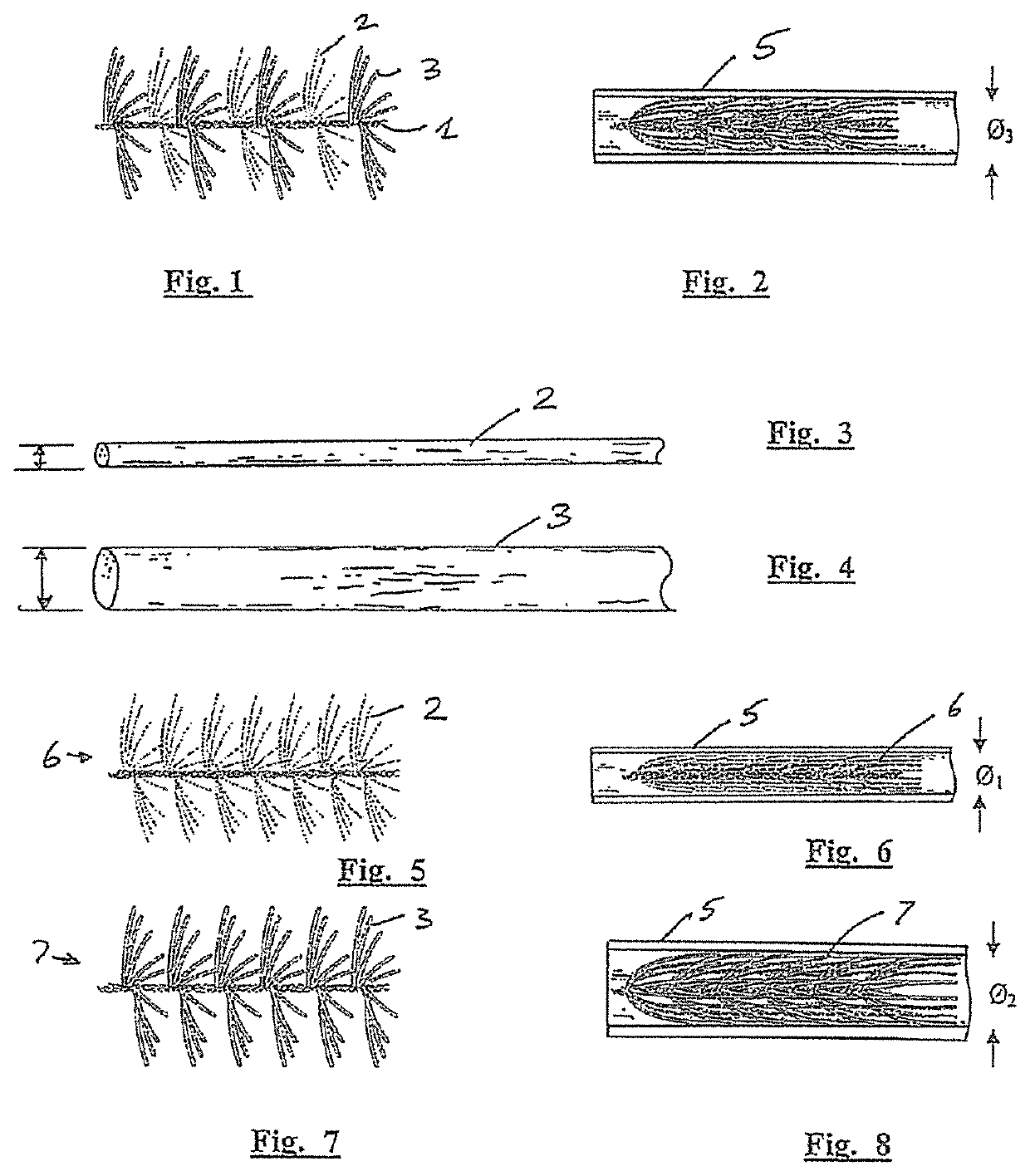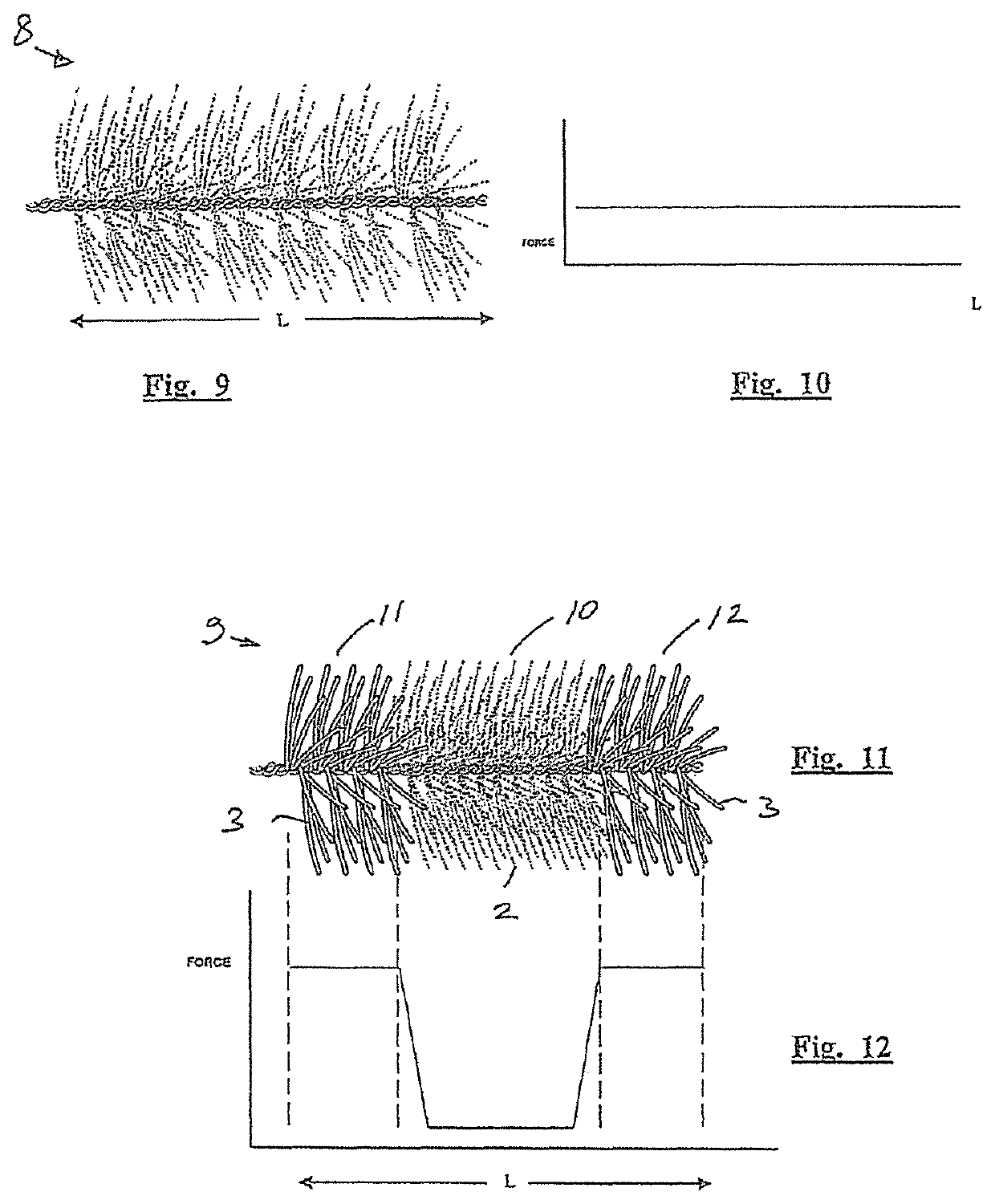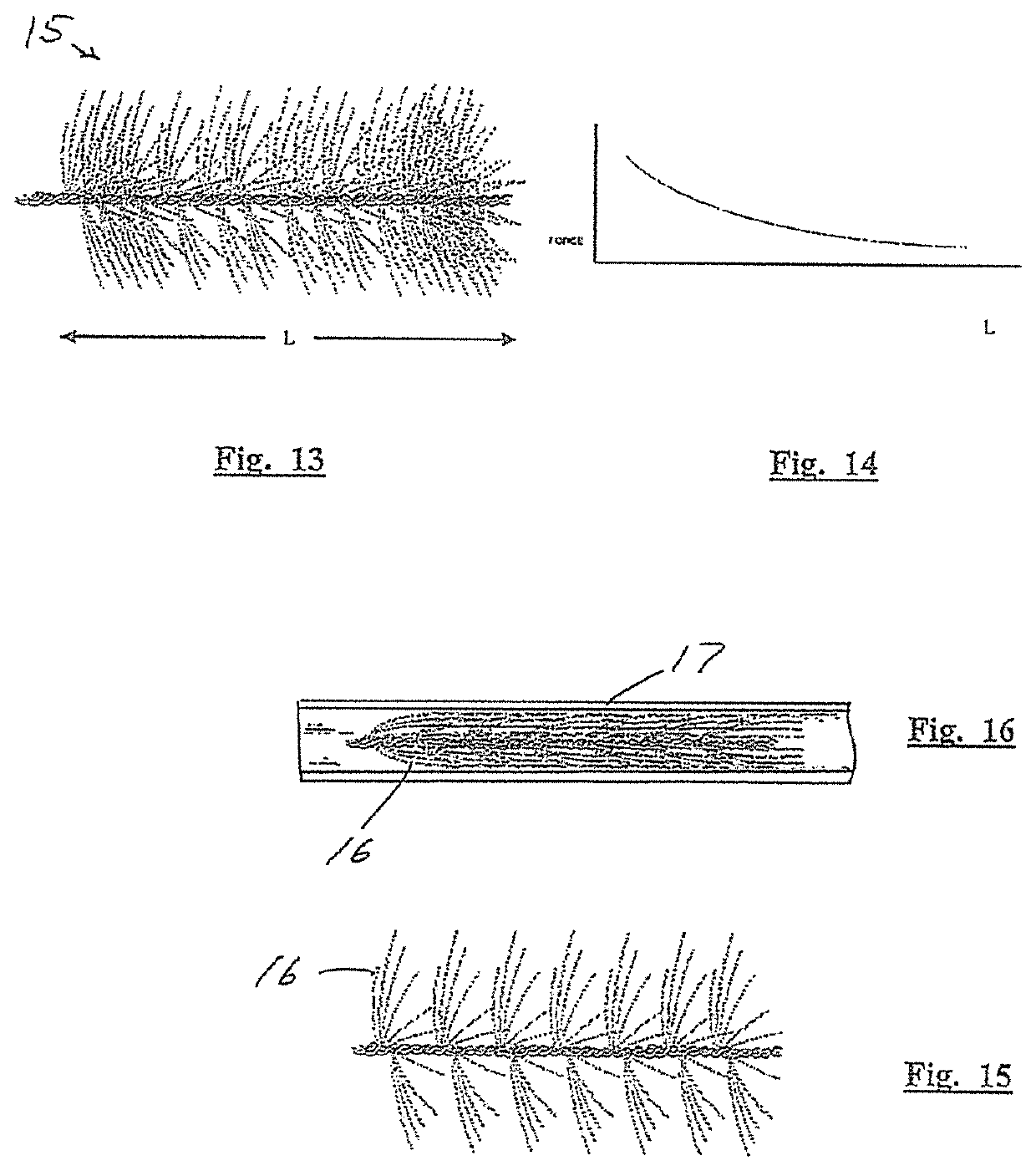Embolisation systems
a technology of embolism and device, applied in the field of embolism devices and systems, can solve the problems of coil migration, high cost, and high difficulty in percutaneous retrieval of coils, and achieve the effects of reducing stiffness between adjacent bristle segments, improving flexibility and articulation, and increasing flexibility
- Summary
- Abstract
- Description
- Claims
- Application Information
AI Technical Summary
Benefits of technology
Problems solved by technology
Method used
Image
Examples
Embodiment Construction
[0355]Referring to the drawings and initially to FIGS. 1 to 8 thereof there is illustrated a bristle device for delivery into a body lumen. The bristle device comprises a longitudinally extending stem 1 and a plurality of bristles extending generally radially outwardly from the stem. In the invention there are at least two different groups or types of bristles.
[0356]In one case a prosthesis with two or more bristle fibre diameters is provided to ensure a low profile for the device when loaded in the catheter 5, and with sufficient anchor force to prevent migration. Smaller diameter fibre bristles 2 are intended primarily to promote and enhance thrombogenicity, while larger diameter fibre bristles 3 are intended primarily to anchor the device in the lumen to prevent migration.
[0357]Lumen occlusion occurs due to thrombogenicity of the device, which is a function of its surface area and its ability to cause stasis. For a given volume of fibre material, many small fibres 2 can be more e...
PUM
 Login to View More
Login to View More Abstract
Description
Claims
Application Information
 Login to View More
Login to View More - R&D
- Intellectual Property
- Life Sciences
- Materials
- Tech Scout
- Unparalleled Data Quality
- Higher Quality Content
- 60% Fewer Hallucinations
Browse by: Latest US Patents, China's latest patents, Technical Efficacy Thesaurus, Application Domain, Technology Topic, Popular Technical Reports.
© 2025 PatSnap. All rights reserved.Legal|Privacy policy|Modern Slavery Act Transparency Statement|Sitemap|About US| Contact US: help@patsnap.com



